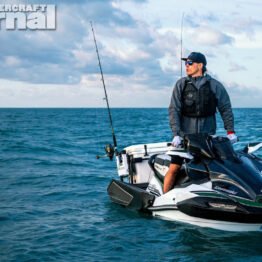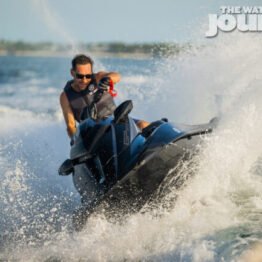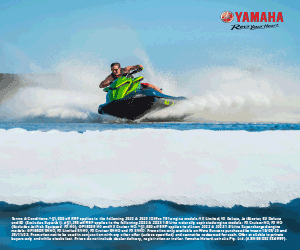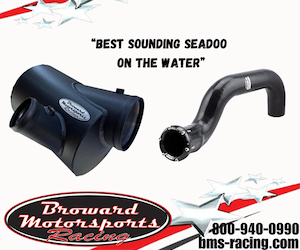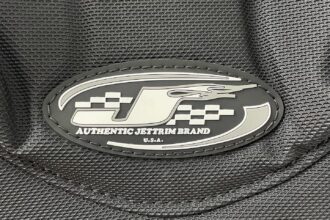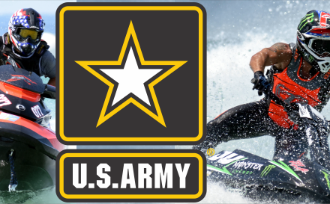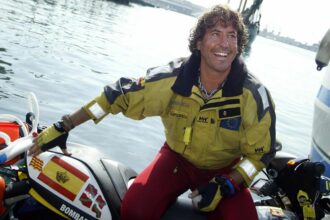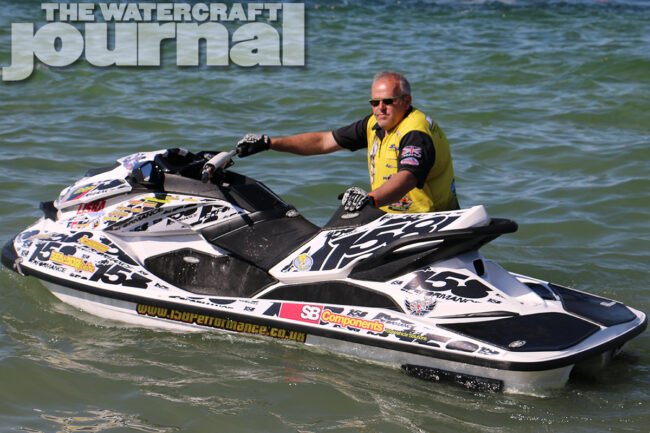
Aftermarket or custom-built hulls have been a point of contention since the earliest days of personal watercraft racing. Yet, back in the 1980s when all that were raced were Kawasaki 440s and 550s, spotting a customized hull with glassed-in tubbies or longer chines was easy to spot. Today, with the advancement of CAD applications to hydrodynamics; the evolution of lightweight, high-tensile strength materials; and ever aggressive athletes have birthed a new breed of racing that goes well beyond the pale of yesterday’s Open classes.
Today, even attempting to enter into GP Ski or Runabout is an astronomical affair. Carbon fiber hulls, aviation-grade fuels, and quick-spooling turbochargers are found not just on the latest standups and runabouts, but even in the once-nebish Rec Lite classes. That’s right! There are teams campaigning carbon fiber Sparks propelled by high-boosted turbo-ACE engines. So to shed a little more light on the subject, touch on the current status of aftermarket hulls and their future, the IJSBA has recently issued a timely bulletin.
Here’s the entire IJSBA press release:
The International Jet Sports Boating Association is issuing a reminder regarding the allowance of aftermarket hulls and the procedure for inclusion of those hulls in sanctioned racing. While IJSBA is issuing this reminder due to a heightened level of inquiries about aftermarket hulls, competitors are advised that this bulletin is not directed toward any specific hull or product. However, this bulletin is notice to potential changes in the near future of how these hulls are regulated.
Aftermarket hulls are allowed in a variety of Ski, Sport, and Runabout categories of racing. Normally, allowances for these hulls are found in Modified, GP, and Open classes. A recent Mod Lites division allowed aftermarket hulls as an evolution of the previous Ski Limited classes. Since their inception, aftermarket hulls have been allowed to be produced by any manufacturer with the limiting factors being safety and the specifications allowed in the IJSBA Rule Book.
Indeed, all aftermarket parts are treated this way: every aftermarket product is unique in that it could be a one-off variance of an original product or a complete one of a kind product. The only specific products IJSBA deems legal are those OEM units homologated for competition. All aftermarket products, including hulls, are evaluated on an individual basis even where IJSBA and the technical inspector are aware that the hull is possibly a mass produced product.
As of 2019, no aftermarket hulls are approved by brand or by model. This is even the case for well-known brands or popular models of aftermarket hulls. A rider must submit his, or her, watercraft for safety inspection prior to competition and, then, technical inspection during competition and at the completion of competition. Safety inspections are examinations for basic safety violations (i.e. secured fuel lines, operational lanyards, etc.) and do not guarantee a watercraft will pass a technical examination.
Where IJSBA is brought in to preview a potential product, prior to competition, there is no way for IJSBA to ensure that the product is not changed during production or by the end user after production. A hull, like every other aftermarket product, is subject to evaluation at every race even where such product has been evaluated numerous time. One technical inspector’s evaluation does not necessarily carry over to other events. This is especially the case where interpretation of the rules are required.
Within the last 5 years, IJSBA has introduced the concept of homologating aftermarket hulls and issuing trackable identifications for these hulls. Contemporary watercraft reach static speeds on the race course higher than ever seen previously in the sport. As competitors navigate the course, at these high speeds, competitors should have a reasonable expectation that the hulls carrying these speed are built with durable materials and to such craftsmanship that the watercraft can be adequately controlled at the relevant speeds.
There is an increasing need for IJSBA to have an oversight over the aftermarket hulls. IJSBA expects to release guidelines for discussion about this coming oversight and to engage the community, on this subject, at the 2019 Thai Airways World Finals. In the meantime, competitors should continue to have confidence that previously used aftermarket hulls will continue to have a home in IJSBA Sanctioned Racing and also be aware that any new designs of aftermarket hulls, seen in 2019, may face reevaluation, at the end of the year, if a new hull monitoring system is designed
If you have any questions regarding the contents of this bulletin, please email info@ijsba.com.






